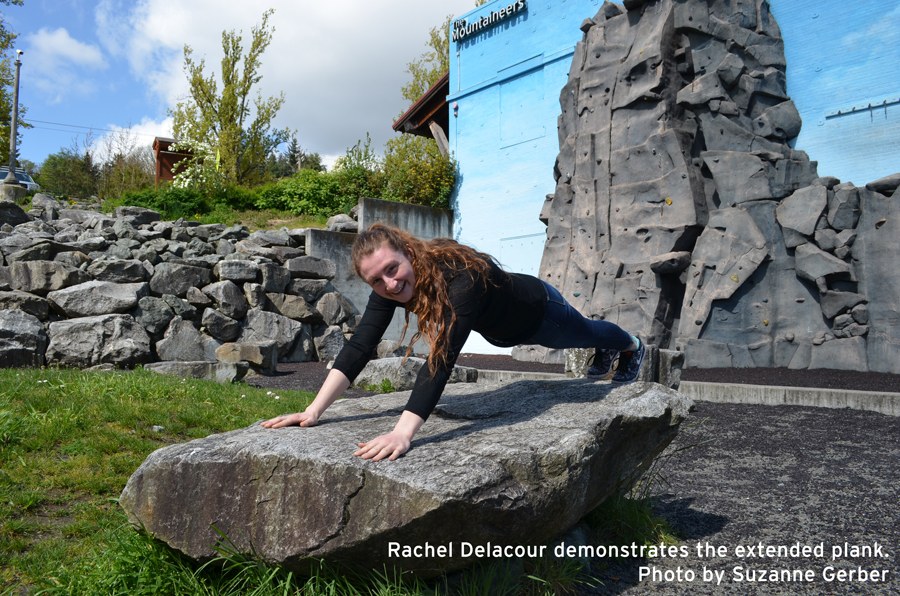
by Courtenay Schurman, MS, CSCS, PN2
Whether you are gearing up for skiing, snowshoeing, climbing, or pack carrying, you will benefit from having a strong core to connect upper and lower body. When my husband and I climb mountains, we like to do pushups at the summit.
Planks are one of the most common and comprehensive movements you can do, and this variation requires no equipment other than a towel or mat to kneel on or a pack for a more advanced version. This variation of the plank requires a strong core and utilizes triceps, shoulders and chest as well as quadriceps, rectus abdominus and transverse abdominus (the muscles along the front of the body). If you focus on “pulling back” with your hands you will also get a mild lat recruitment as well. As you increase your strength you can hold the position longer, extend your arms farther from your legs, or add a pack to your back.
SET UP
Kneel on a towel, mat or blanket with hands directly below your shoulders. On an exhale, extend your legs so that you rise into a traditional plank position on hands and toes. Squeeze the inner thighs together to engage adductors, and contract the glutes so that all your core muscles stay activated.
WALK INTO EXTENDED POSITION
Keep your hips slightly elevated (in other words, avoid letting them sag; always protect the lower back from hyperextension or you might experience a pinching sensation that is uncomfortable). With abdominals held tight, slowly walk your hands forward as far as you can, without the hips moving. If you find that your feet slide, you can brace them against another planker or against a tree, rock, or wall. You can also do this barefoot on a yoga mat but avoid doing it in socks (they will slide too much).
INCORPORATION
Aim for holding the extended plank for 30 seconds or longer, then walk your hands back to the starting position and lower your knees to the floor. Stretch your hips back to your heels (child’s pose) to relax and stretch the lower back. Repeat for 3-5 sets.
VARIATIONS
To make the exercise easier on your balance, widen your legs and don’t walk the hands forward quite as far. You can also do a variation on your knees.
To increase the difficulty, keep feet and hands very close together, add a pack to your shoulders, walk hands as far forward as possible, or consider elevating the feet on a block, step or bench.
For more how-to exercises and nutrition tips for the outdoor athlete, visit Courtenay Schurman’s website at www.bodyresults.com or send her a question at court@bodyresults.com.
 Courtenay Schurman
Courtenay Schurman